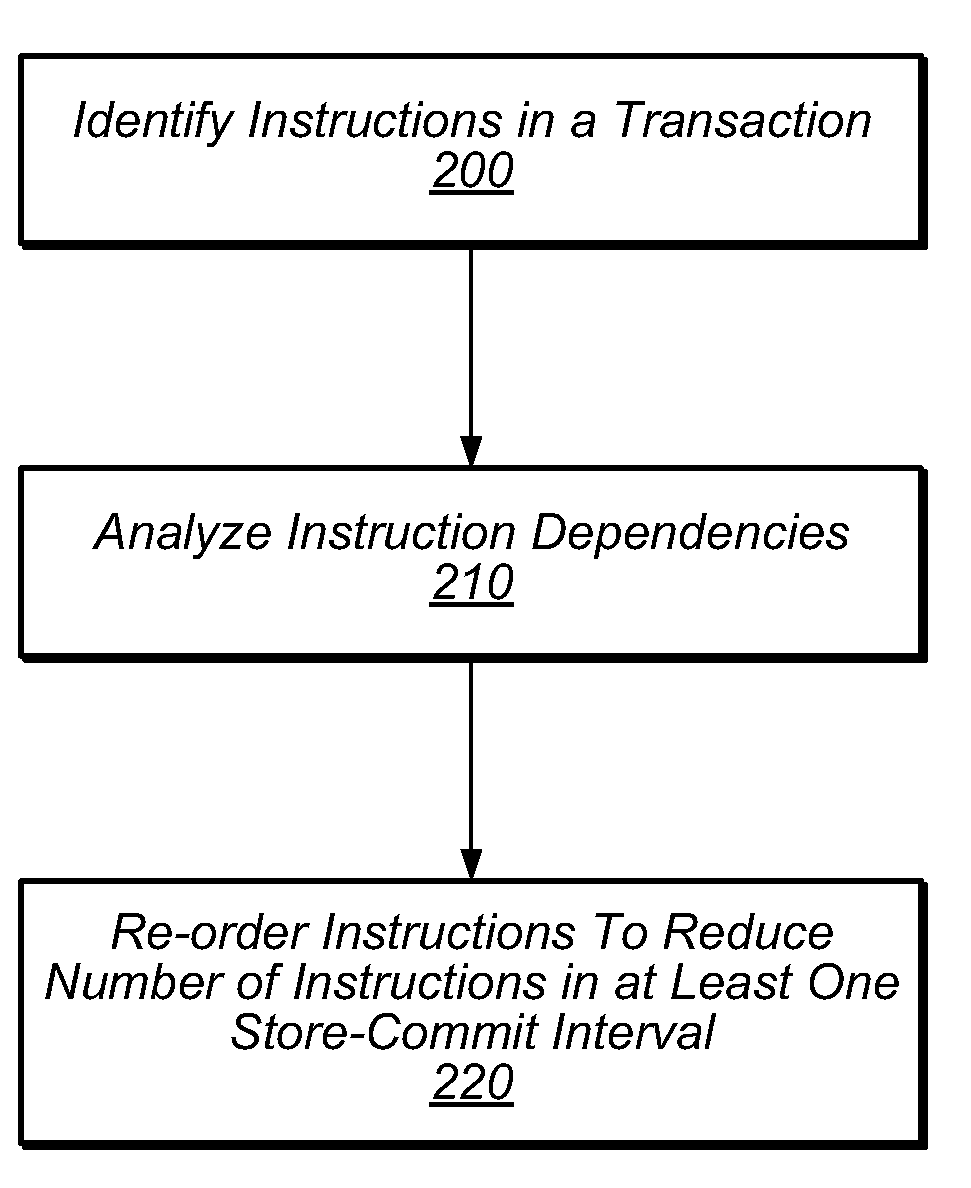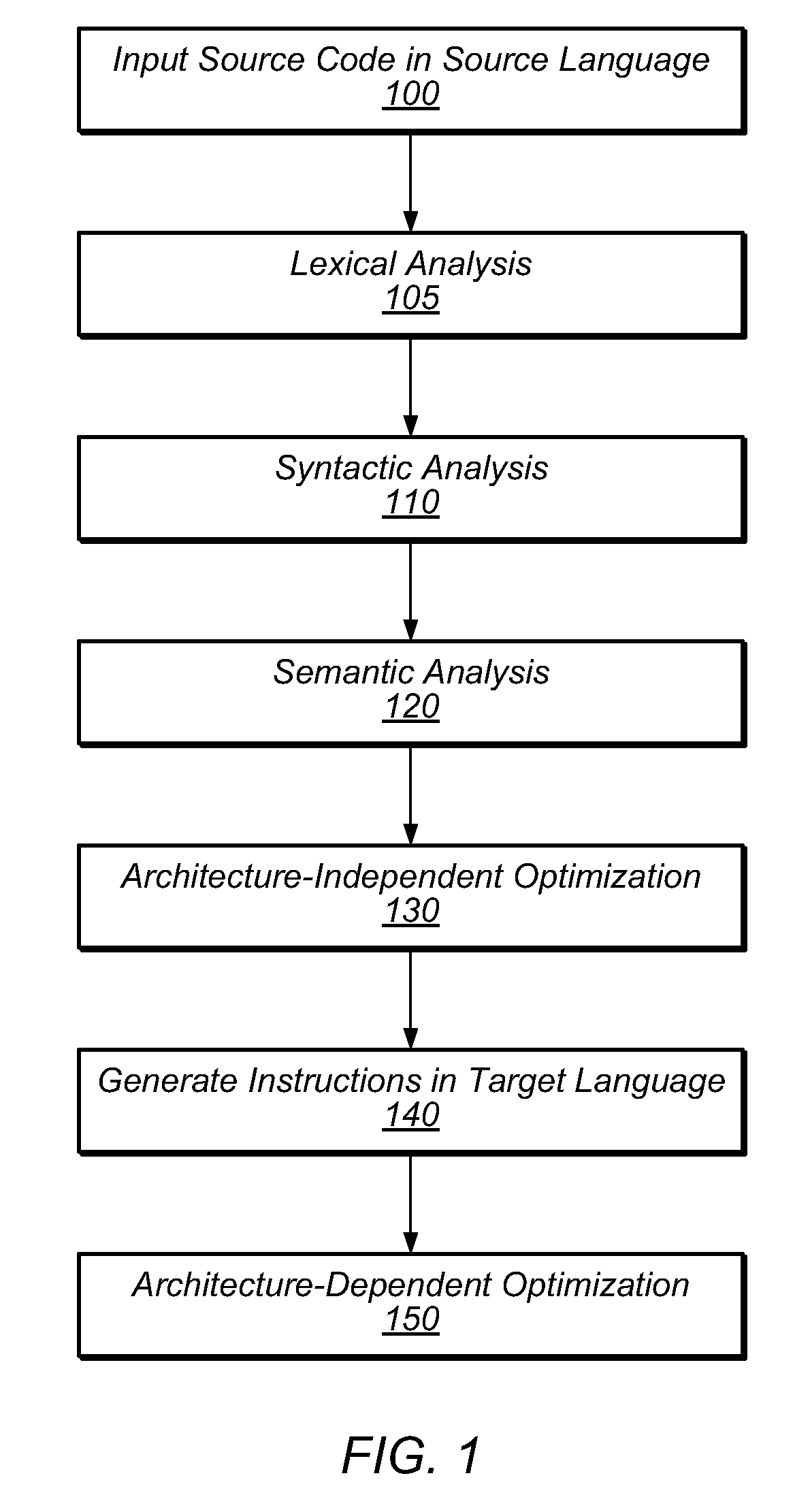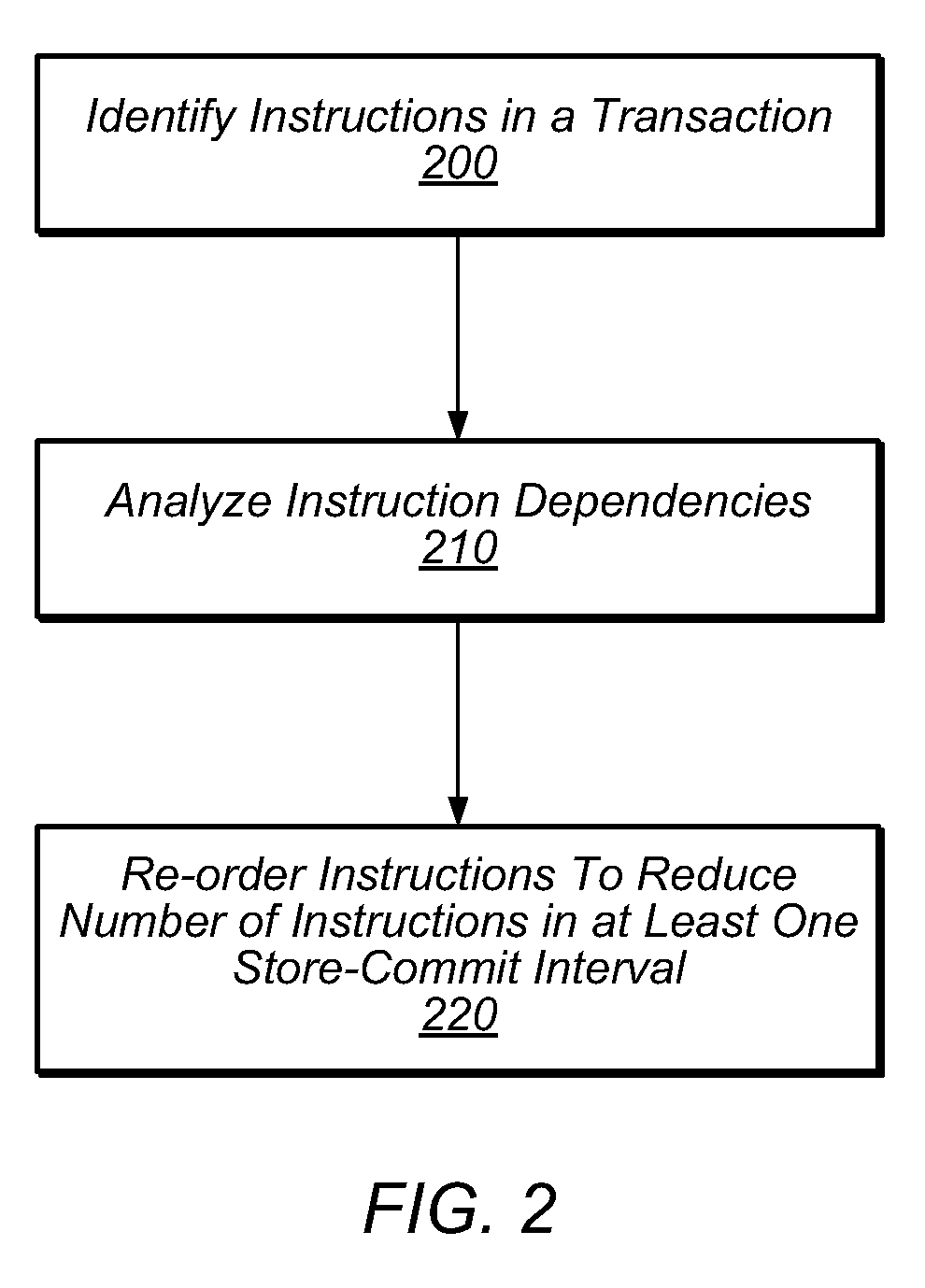System and Method for Reducing Transactional Abort Rates Using Compiler Optimization Techniques
a technology of compiler optimization and transaction abort rate, applied in the field of transactional memory computer systems, can solve the problems of inability to execute transactionally, inability to perform transactional transactions, and inability to execute transactions in sequence, so as to reduce the rate of aborts experienced, reduce the transactional abort rate, and reduce the effect of program abort ra
- Summary
- Abstract
- Description
- Claims
- Application Information
AI Technical Summary
Benefits of technology
Problems solved by technology
Method used
Image
Examples
Embodiment Construction
[0025]In a transactional memory system, a transaction may modify one or more values in shared memory. Any program instruction whose execution causes a value of a shared memory location to change may be referred to herein as a store instruction. Execution of a store instruction may perform functions other than the modification of one or more memory values. For example, a compare-and-swap (CAS) operation may compare the value contained in a memory location to a given value and, if the two values are the same, modify the value of the memory location to a given new value. Because its execution may modify a value in a shared memory location, such an instruction may also be considered a store instruction.
[0026]When a thread executes a store instruction as part of a transaction, the transaction may conflict with one or more other concurrently executing threads. As a result of this conflict, one or more of the threads involved in the conflict may abort and / or be otherwise delayed. For examp...
PUM
 Login to View More
Login to View More Abstract
Description
Claims
Application Information
 Login to View More
Login to View More - R&D
- Intellectual Property
- Life Sciences
- Materials
- Tech Scout
- Unparalleled Data Quality
- Higher Quality Content
- 60% Fewer Hallucinations
Browse by: Latest US Patents, China's latest patents, Technical Efficacy Thesaurus, Application Domain, Technology Topic, Popular Technical Reports.
© 2025 PatSnap. All rights reserved.Legal|Privacy policy|Modern Slavery Act Transparency Statement|Sitemap|About US| Contact US: help@patsnap.com



